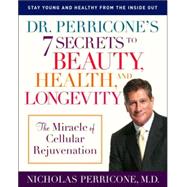
Note: Supplemental materials are not guaranteed with Rental or Used book purchases.
Purchase Benefits
What is included with this book?
| Introduction | p. xi |
| Cellular Rejuvenation | p. 3 |
| Lean for Life | p. 37 |
| Supporting Our Support Structure | p. 57 |
| The Skin We're In | p. 81 |
| Sex for Life | p. 113 |
| Reversing Aging Through Exercise | p. 133 |
| Stress Reduction = Life Extension | p. 159 |
| The Anti-Aging Kitchen | p. 181 |
| Caralluma Fimbriata Safety Profile | p. 237 |
| Abbreviations and Acronyms | p. 241 |
| Resources | p. 243 |
| References | p. 253 |
| Index | p. 325 |
| Table of Contents provided by Ingram. All Rights Reserved. |
The New copy of this book will include any supplemental materials advertised. Please check the title of the book to determine if it should include any access cards, study guides, lab manuals, CDs, etc.
The Used, Rental and eBook copies of this book are not guaranteed to include any supplemental materials. Typically, only the book itself is included. This is true even if the title states it includes any access cards, study guides, lab manuals, CDs, etc.
Excerpted from Dr. Perricone's 7 Secrets to Beauty, Health, and Longevity: The Miracle of Cellular Rejuvenation by Nicholas Perricone
All rights reserved by the original copyright owners. Excerpts are provided for display purposes only and may not be reproduced, reprinted or distributed without the written permission of the publisher.